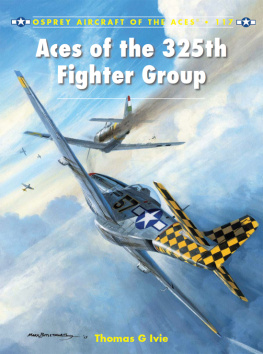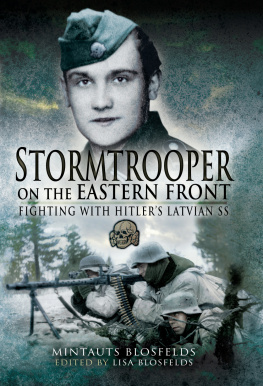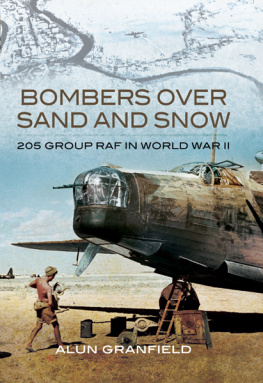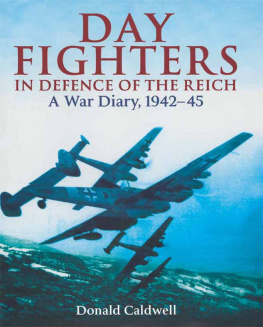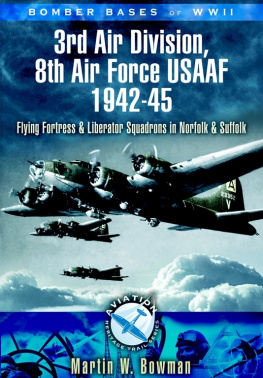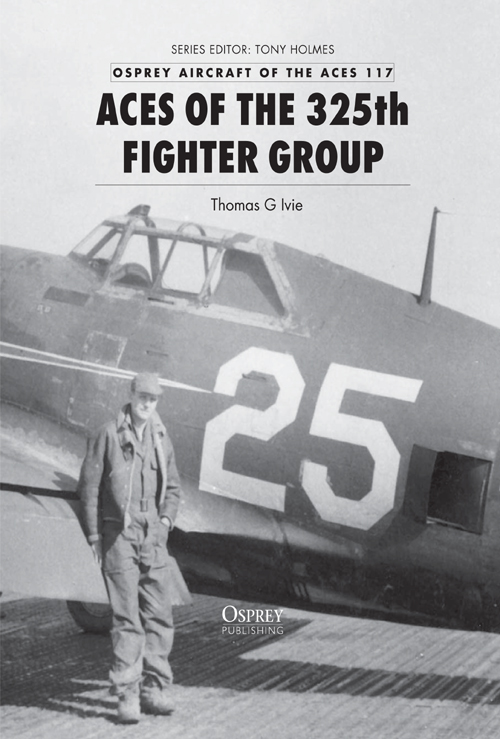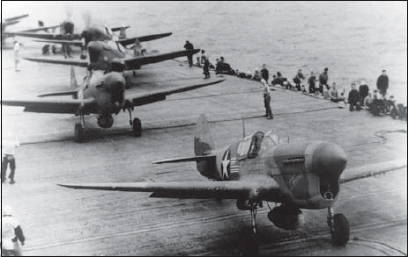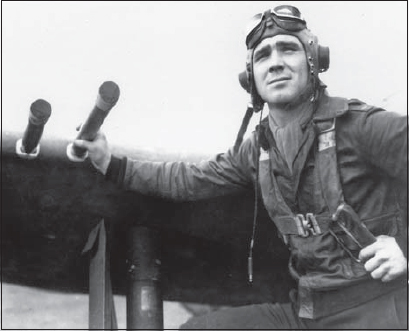CONTENTS
DEDICATION
T his book is dedicated to the memory of the late Dwayne Tabatt, who worked so diligently in his position as the 325th FG Associations photo archivist. His efforts insured that a very large number of images of the groups personnel and aircraft would be available for researchers to use for many years. As such, he gave me numerous photographs to use should I be able to get a book contract and tell the story of the Checkertails. After his death the remainder of his collection was given to my colleague, and fellow Osprey author, Carl Molesworth for safekeeping. Virtually all of the images used in this book are due to Dwaynes generosity and dedication to the telling of the 325th FG history.
The author would also like to thank the following individuals for their generous help in the preparation of this book. My old friend, and fellow Osprey author, William N Hess, provided all of the 325ths mission summaries and numerous letters and documents received from former Checkertail pilots that were extremely important in the preparation of this book. The microfilm of the Checkertail Clans encounter reports, provided by Frank Olynyk, was invaluable in preparing this history. Carl Molesworth supplied numerous photographs from the Tabatt collection, as well as 325th FG documentation that augmented the narrative of this book. Other photographs came from the late Lt Col Lewis W Chick, the late Col Chester Sluder and from the National Museum of the US Air Force. Finally, thanks to my friend Sam Sox for using his magic to enhance the quality of several images published in this volume.
Finally, thank you to my wife, Mary, for proofreading the manuscript and offering suggestions on how it could be improved.
Tom Ivie
Taylor Mill
Kentucky, USA
July 2013
ACTIVATION, TRAINING AND INTO COMBAT
P robably one of the most feared symbols an Axis pilot in the Mediterranean Theatre of Operations (MTO) could see in the air were the bright yellow and black checkerboard tails of the 325th FG. There was a good reason for this concern, as the Checkertail Clan was one of the deadliest fighter groups in the MTO. Indeed, by wars end its pilots had downed 534 Axis aircraft in aerial combat, making the 325th the second highest scoring unit (behind the 82nd FG see Osprey Aircraft of the Aces 108 P-38 Lightning Aces of the 82nd Fighter Group for further details) in the Fifteenth Air Force. The 325th produced a total of 28 aces during its combat tour, which began in April 1943 in the skies over North Africa and ended in Italy two years later.
General Order 50, dated 30 June 1942, issued by Headquarters First Air Force, Eastern Defense Command, activated the 325th FG. The order authorised the detaching of officers and enlisted men from the 79th FG under the command of Maj Leonard C Lydon as a cadre around which the 325th FG was to be formed. The new group was composed of the 317th, 318th and 319th Fighter Squadrons. Initially, HQ 325th FG and the 317th Fighter Squadron (FS) were sent to Theodore Green Field at Hillsgrove, Rhode Island, while the 318th and 319th FSs set up shop at Grenier Field in Manchester, New Hampshire.
As the units settled in at their respective bases the training of both flying and ground personnel began in earnest. We will take a look at the training period through the eyes of the 317th FS, which was activated on 3 August 1942 with 1Lt James E Tucker as its first commanding officer. During the next several days personnel began rolling in and the unit began its organisational setup. Operational training began shortly thereafter when the 317th received 12 P-40Es from the 86th FS. The squadron history noted that;
Intense, vigorous training missions were scheduled in interception, ground gunnery tactics, dive-bombing and simulated dogfights. P-40s were idle only when bogged down by weather, flying from dawn to dusk and frequently at night. On 7 October Capt Jack C West was appointed squadron commander, relieving Lt Tucker who was transferred to Headquarters, 325th FG. On 13 October SSgt Watkins Mayo was killed when his aeroplane crashed at Norwood, Massachusetts. On 23 December Lt Bart Judge failed to return from a routine training mission, and it was not until several months later that the squadron learned he had crashed to his death.
In January 1943 P-40Fs of the 325th FG were loaded aboard USS Ranger (CV-4) and shipped across the treacherous waters of the Atlantic to North Africa (National Museum of the USAF)
A change of command occurred on 10 December 1942 when Lt Col Gordon H Austin replaced Maj Leonard Lydon as commanding officer of the 325th FG. By now the group had nearly reached its authorised strength, and during the remainder of December Lt Col Austin quickly brought the 325th up to combat readiness.
The new year started on a positive note for the group as it received orders to move to Langley Field, Virginia, on 1 January 1943. The pilots headed for their new home by train the following day, and upon their arrival they found that they had been equipped with mostly brand new P-40Fs. It was whilst at Langley Field that the pilots learned that they and their aircraft would be shipped to North Africa aboard the aircraft carrier USS Ranger (CV-4). Having reached their destination, the Warhawk pilots would have to fly their P-40s off the vessel as the carrier sailed in open waters. For the next few days the squadrons spent time practising takeoffs from a simulated carrier deck. This training ended on 6 January, and 24 hours later the P-40s were flown to Norfolk Naval Yard, where they were loaded aboard Ranger. On 8 January the carrier and its screening ships sailed for the combat zone of North Africa.
After a virtually uneventful voyage Ranger arrived at the point of takeoff and pilots were ordered to man their aeroplanes. The carrier takeoffs and flight to Casablanca were performed without incident, and soon the group was safely ashore at Cazes airfield, in French Morocco. The air and ground echelons left the US a few days after the pilots and their aeroplanes, and by 1 March 1943 the entire 325th FG had finally been reunited at Tafaraoui airfield, about 30 miles from Oran.
On 19 January 1943 Ranger reached the launching point off North Africa and the 325ths pilots flew their P-40s off the carrier and headed for Cazes airfield near Casablanca, in French Morocco. All arrived safely (National Museum of the USAF)
During February 1943 the group had to turn over some of its P-40s to the veteran 33rd FG, which needed replacement aircraft to continue supporting the ground forces in western Tunisia. As a result of this the 325th retained only 38 Warhawks when its final operational training began in March. This shortage of aircraft meant that when the group was declared combat ready in early April, only two of its squadrons could be sent to the 325ths new base at Montesquieu, in Algeria. The squadrons drew straws to see which one would have to remain behind, and the 317th FS lost. The 318th and 319th FSs moved to their new base during the first two weeks of April, and by the 15th they were settled in and ready for combat operations.

